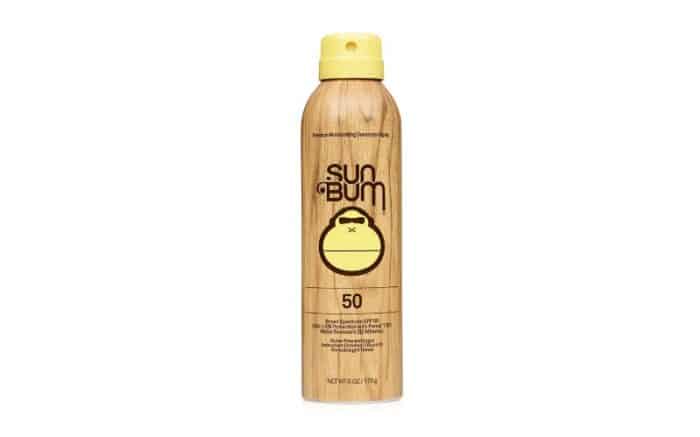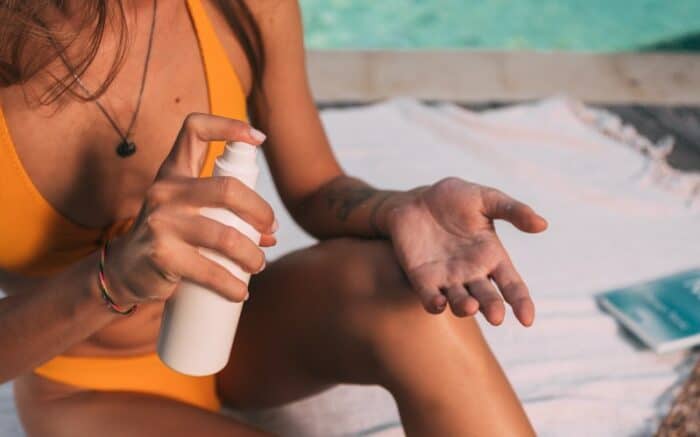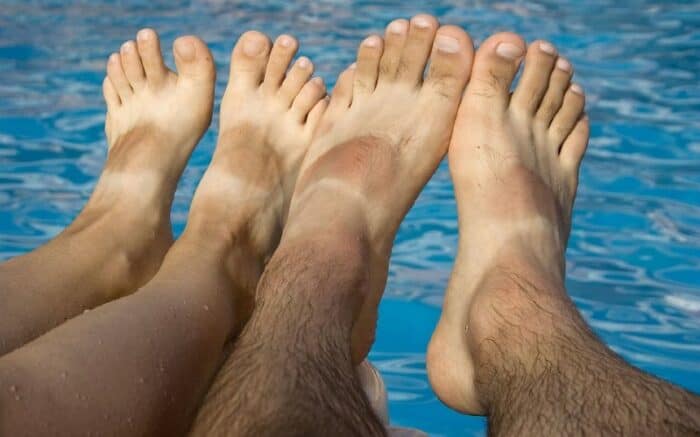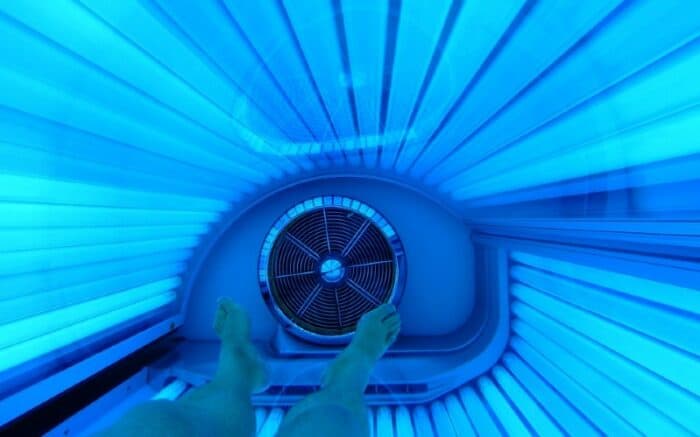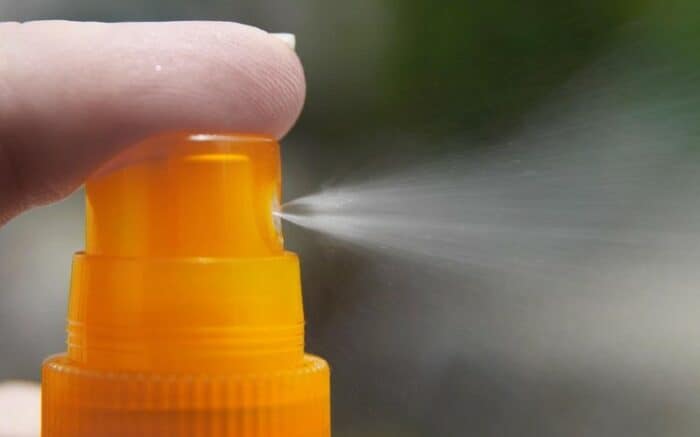How Long Does it Take to Tan?
Most of us love the look of a nice summer tan. At the same time we’re all generally aware of the risks of getting too much sun. It can be a real danger. So what can you do? If you want a tan, how long do you have to wait? Let’s go over some basics for getting a tan, including how to do it as quickly and safely as possible.
How Long Does it Take to Tan?
One of the biggest frustrations when it comes to tanning for many people is timing. We’re told that sun exposure is dangerous and we need sunscreen. And the sunscreen gives us more time in the sun. But how much time do we need? The fact is there are many variables you need to consider that can include your natural skin tone, the intensity of the sun on the given day, and the SPF of your sunscreen. Your skin type is a major factor here and dark brown skin will not react to prolonged sun exposure the same as pale during the tanning process.
First Step: Use Sunscreen
It’s always important to wear sunscreen before going out. You want a tan, yes, but you need to try to minimize damage. You will still get tanned with sunscreen on, it will just take longer and minimize the effect. It’s a much safer route to go than hitting the sun fully exposed with no protection. Getting a sunburn can seriously increase your risk of skin cancer so you want to avoid burns as much as possible. A broad spectrum sunscreen blocks both UVA rays and UVB rays. That doesn’t mean it blocks them all, but it can block a lot. An SPF 30 sunscreen will let through about 3% of all UV rays. This will still be damaging to your skin but it’s far less likely to result in a burn, so long as you aren’t falling asleep in the sun.
Does Skin Tone Affect Tanning Time?
The darker your skin is naturally, the more melanin you have. Melanin is the pigment in skin that causes variations in skin tone. It’s also what your skin produces when you’re tanning in cells called melanocytes. Darker skin is able to produce more melanin than lighter skin. That means if you have naturally dark skin not only will it take you longer to tan, you won’t have as noticeable a change in skin tone as a result.
Melanin is your skin’s way of protecting you from UV rays. UV radiation damages skin cells. UVA penetrates deeper and causes premature aging. UVB rays don’t go as deep but they are even more dangerous. They cause mutations in your skin cells which will kill off many but can lead to skin cancer in others.
When you get a sunburn, that’s your body trying to heal the damage caused by the radiation. You get red, sore and swollen because many cells have died and your immune cells are trying to repair the damaged ones.
If you have fair skin, that means you produce much less melanin. Because of that, your tanning time is decreased to the point where you may only burn and not tan at all. As many fair skinned people have learned, the sun is not very forgiving to them. For that reason, many fair skinned people won’t even try to tan because they simply burn and nothing else.
For people with a darker skin tone it can take much longer to get a tan. While someone with medium skin tone could tan in an hour or two, someone with very dark skin might take four or five hours. Those with extremely dark skin are likely to not even notice a tan at all, but they still run the risk of burning.
Melanin is like a natural sunscreen. The melanin you produce protects you from UV rays but only minimally. It’s by no means a substitute for real sunscreen. That said, if you are naturally darker skinned you are more protected to begin with than those with lighter skin.
A person with a fairly light complexion may see a benefit to their sun protection from the melanin their skin produces about on par with an SPF 2 or 3 sunscreen. So not very much at all, but it is a little bit.
How Melanin Works
Your body has melanin all through it, in your skin, hair and even your eyes. It produces pigmentation and thus those with a darker skin tone have more melanin. This is almost exclusively a geographical condition. People whose ancestors lived in highly sunny areas naturally grow to produce more melanin as an adaptation. Those from areas with less sun produced less melanin and their ancestors are the same way.
Cells in your body called melanocytes are responsible for melanin production. Melanin itself is actually a complex polymer that comes from an amino acid called tyrosine in your body.
There are three different types of melanin in your body. The kind you’re thinking of when it comes to tanning is called eumelanin and that actually is further subdivided into brown and black. This makes your skin, hair and eyes darker depending on levels. If you have no black eumelanin you’ll have blonde hair.
Pheomelanin is what colors pinker parts of your body, things like your lips. If you have the same amount of pheomelanin as eumelanin, you’ll have red hair.
Lastly, there’s neuromelanin, which you’ll probably never see. This colors your neurons.
People typically all have the same number of melanocytes, more or less. But they can produce more or less melanin. In your skin, melanin absorbs UV rays and forces them back up to the surface of your skin. This helps prevent tanning, burning, premature aging, and skin cancer. It only helps, however. UV rays are powerful and can easily overwhelm the melanin in your skin to cause damage.
Melanin is activated when you expose yourself to UV rays. That is literally what a tan is. Your skin senses the damage being caused by UV radiation and the melanocytes produce melanin to try to protect you. This is a process, not an instant thing. That’s why tanning takes time. But it’s also why you need to cut yourself off before you feel you look as dark as you want, and definitely before you burn. Melanocytes can continue producing melanin for several hours after sun exposure has ended. So you’re going to want to spend your time in the sun, then get back into the shade and wait to see how the tan develops. It’s a game of patience and takes an investment of time.
How Long To Tan with Pale Skin?
The lighter your skin the faster you tan and the more likely you are to burn. For those with very fair skin who never seem to tan, your sun exposure needs to be limited to prevent you from jumping right into a sunburn.
You should start with only 15 minute sof direct sun exposure and see how that works for you. Remember, you should have also applied sunscreen.
This may not work well but pale skin presents a tricky issue when it comes to sun tanning. There was long a popular belief that the sun itself was causing the change in skin tone in much the way a turkey will brown in the oven. But that’s not quite the same thing. Your skin is producing the color to protect it from the sun, as we said. But very fair skinned people just don’t have the number of melanocytes that darker skinner people do. They are incapable of producing the same amount of melanin. That means your body is literally not able to tan as well as someone who has a darker skin tone. And that’s why many fair skinned people skip right to burning. It’s because, since their skin can’t produce melanin, it has no natural protection and the UV rays immediately begin to do harm while no change in pigmentation occurs.
So if you realize you don’t tan, know that is’ not because you’re doing it wrong. It’s because your body is chemically incapable of doing it. Or at least not doing it as noticeably as other people’s.
Giving yourself 15 – 20 minutes is a good way to gauge just how much melanin your fair skin can, in fact, produce. After that time, get out of the sun. Give your skin some time to adjust and relax and just wait it out in the shade for a while. See if there’s any noticeable difference. If there is not, maybe you genuinely can’t tan. Or maybe there’s only a small amount of pigment. That may be as good as things get for you in a single session.
Remember, sunburns are very dangerous in the long term. A sunburn once every two years can triple your risk of certain cancers. This damage can’t be undone, either. If your skin is too pale for tanning, consider alternatives like a spray tan or bronzer of some kind. These are much safer in the long run.
The impression here is that a person with light skin can potentially tan quickly, but that’s not entirely true. A person with fair skin can burn quickly. If you want a real, true tan it may take days of sun exposure to produce the melanin you’re looking for. But it needs to be tempered not just with sunscreen but with leaving the sun to prevent those burns from forming. So it can be a real process to try to get this done if you’re committed to it.
How Long to Tan with a Medium Skin Tone?
If you have a medium skin tone, getting a tan will definitely take you longer. Expect to take up to an hour or two in the sun to achieve a full tan. Again, make sure you’re wearing sunscreen to help ameliorate the damage caused by the sun’s rays.
Depending on how you judge your own skin tone, you’ll want to play with the timing here a bit. If you lean more towards the pale side of things, cut your time off sooner. Maybe leave the sun after an hour to see how things are shaping up. If you’re not noticing nearly as much color as you like, try another 30 to 60 minutes.
After two hours in the sun you will probably need to reapply any sunscreen you have on, so keep that in mind as well.
How Long to Get a Tan with a Dark Skin Tone?
Based on what I said already you might think people with dark skin take the longest to get a noticeable tan. Weirdly enough, that’s not true. Because they have so much melanin already, people with dark skin tones tend to tan much faster and darker than others. The issue is that you often can’t notice it as readily because the skin tone is already so dark.
Someone with dark skin can tan in as little as 20 minutes. They are also far less likely to burn because of the melanin already present in their skin. But that doesn’t mean people with dark skin are immune to the ravages of the sun, Quite the opposite. People with very dark complexions tend to have higher skin cancer rates overall because they are less likely to notice the effects of the sun on their skin and therefore can’t get it treated as early as they should.
Remember: UV Rays Cause Skin Cancer
All sun exposure is dangerous to your skin and health. This includes tanning beds which are actually worse. That doesn’t mean you should shun the outside, of course. It’s not practical or reasonable and it’s not necessary. The sun has health benefits as well, including aiding in the production of vitamin D. So being in the sun is important to living a healthy life. Think of it like water. Drinking water is good and healthy. Breathing water is potentially fatal. You need to be responsible with it. That just means don’t forget a good sun hat and some sunglasses.
Because all sun exposure can be dangerous, you need to be prepared. Sunscreen and sunblock are your best tools for defense, even when getting a suntan. A good sunscreen will protect you from the sun while still allowing you to get a tan. Hopefully, it prevents the damage of a burn.
UV rays cause cellular mutation which is what leads to cancer. That’s why you want to block it as much as possible. There are several potential kinds of skin cancer from melanoma to basal cell carcinoma to squamous cell carcinoma. These have the potential to be fatal which is why prevention is so important.
Luckily, many types of skin cancer are treatable if caught early enough as well. But, as they say, any ounce of prevention is worth a pound of cure. Always use sunscreen and always follow the directions.
Many sunscreen users don’t actually follow the directions for the product, which can greatly alter its effectiveness. If the sunscreen needs to be applied every two hours, then you can’t let that time slip by. No doubt you or someone you know has forgotten to add more sunscreen for an hour or two or even longer past the recommended time. If that happens, it can get to the point where it’s the same as you not having any sunscreen on at all.
If you are being physically active, playing sports or working, and you’re sweating, you’ll need to replace your sunscreen more often.
Tan Alternatives
The easiest and safest thing you can do these days when you want a tan is to give it a boost. Not only is this fast, it’s pretty easy. Spray tans, self tanning lotion or self-tanners are great options if you use them properly. They can get you a nice tan faster than the alternative.
No one wants to have a fake spray tan that makes them look orange and that’s fair. But an orange, fake tan is a tan that was done incorrectly. Think of it like getting a really bad burn that makes you lobster red. It’s not how things should have happened and it looks a little silly. But, if done properly, a spray tan can look very real.
Spray tans use something called dihydroxyacetone which is essentially just a very simple sugar. You’ll see it on labels as DHA. What this does is react with amino acids in your skin to produce melanocytes, which are very similar to your natural melanin. These form in the upper, dead layers of your skin and darken to give you that tanned look. But because they’re only in the surface layers of your skin, the color will fade away quickly and typically only last about a week or so.
Spray tans can get you tanned very quickly. But, like normal tans, the DHA takes some time to reach its full color, so you’ll need to wait a few hours. Just make sure you’re getting the proper concentration of DHA If you have very pale skin, start at 5% or less. If you’re a tanning pro or have a darker complexion, you can get up over 10% to as much as 15% or more, but expect a very dark tan at those levels.
The Bottom Line
Getting a tan is going to take time no matter what your skin tone. You need to be safe and take precautions to matter what. If you have pale skin you may have to settle for a spray tan simply because your skin can only do so much. As always, stay safe and have fun.
Categories: Beach

